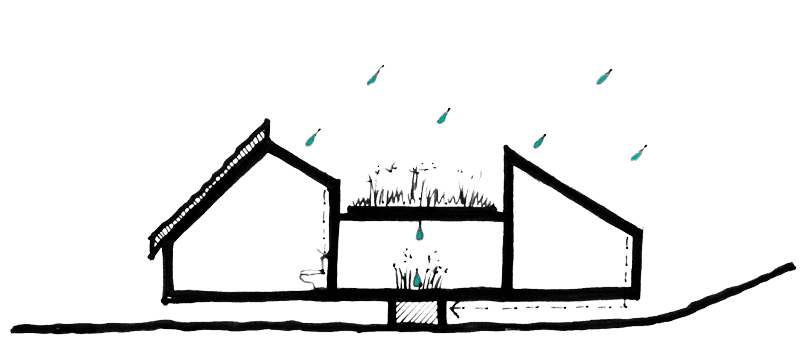Norfolk Broads Visitor Centre

Cantilevering over the water, our proposal for Acle Bridge draws on the beautiful natural surroundings to create a unique visitor attraction.

Meeting the Broads Authority brief
The brief required a sympathetic design that connects the building with nature. Our proposal offers spaces for learning, leisure, washing and laundry, bike hire and a ranger’s office, while managing the ever-present risk of flooding.
Designing in simple forms
Our design comprises two barn like structures, with a café to the east and a learning centre to the west. Prised apart and floating above the landscape, they sail lightly over the water, letting nature reclaim the space in-between and exposing the reed beds and river bank below.


We took cues from the local vernacular; barns and boat sheds are common in the area. Norfolk Reed thatched roofs conceal the buildings in the landscape, neatly highlighting environmental cycles and acting as a reminder of the Broads’ role in providing local building materials. Charred timber shingle cladding resists weathering and algae, and is in keeping with the materiality of the neighbouring buildings.
We played with light, vistas and journeys to ensure that the building doesn’t have dead ends, or a cabin feel; instead it draws you through to the river and the stunning views across the broads.



